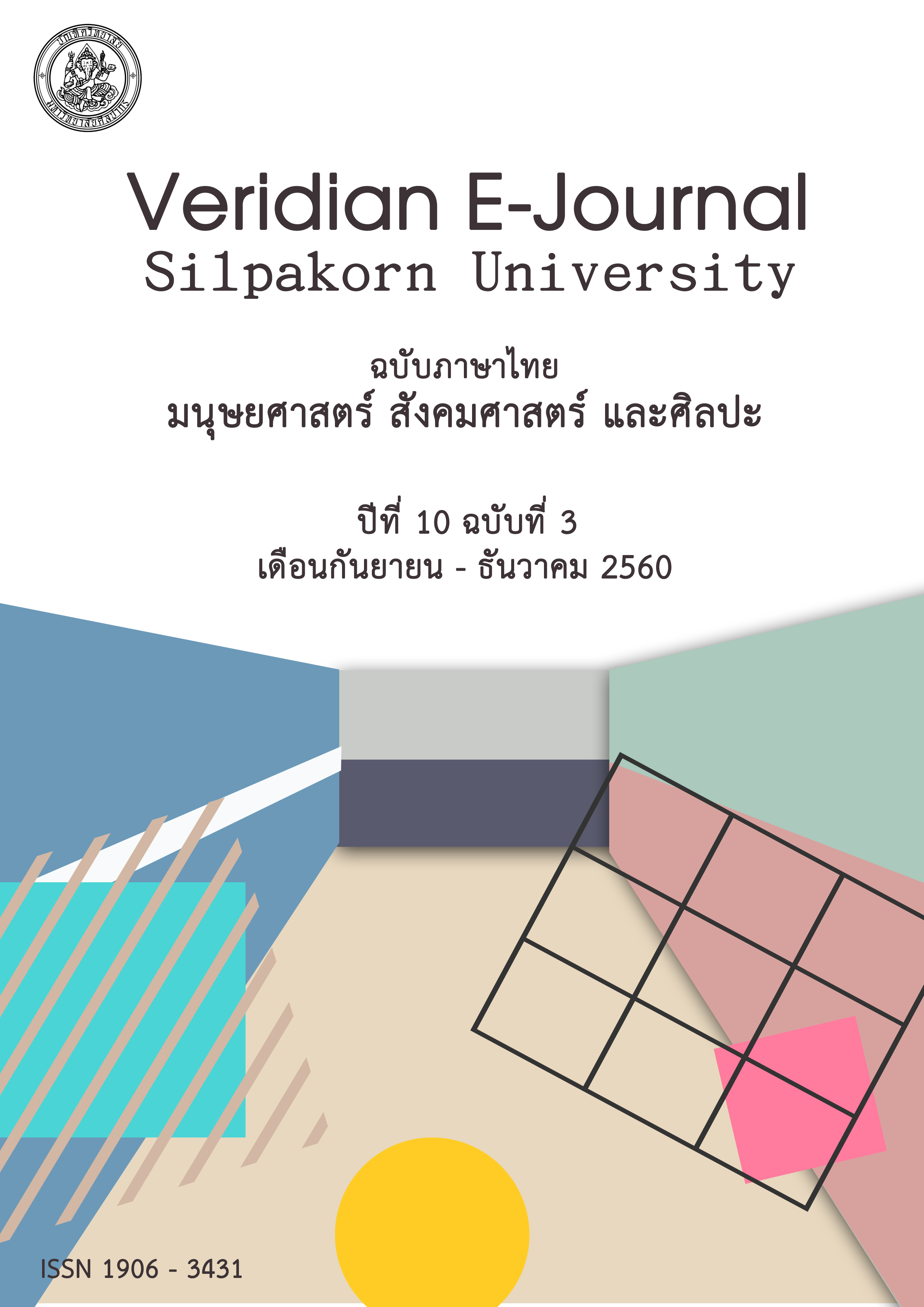เทคนิคการเพิ่มเสียง อะ กลางคำ ในเอกสารใบลานอักษรไทยน้อย
Main Article Content
Abstract
บทความนี้มีวัตถุประสงค์เพื่อศึกษาวิธีการเขียนคำที่มีเสียงอะกลางคำ ประเภทของคำที่มีเสียงอะกลางคำ และศึกษาคำศัพท์ที่มีการเพิ่มพยางค์ที่มีเสียง อะ กลางคำ โดยศึกษาจากเอกสารใบลานที่บันทึกด้วยอักษรไทยน้อยและเป็นวรรณกรรมร้อยกรองประเภทโคลงสาร จำนวน 5 ฉบับ ผลการศึกษาพบว่า การเขียนคำให้เกิดเสียงที่มีพยางค์ อะ กลางคำ โดยเขียนด้วยอักษรและอักขรวิธีอักษรไทยน้อย ใช้วิธีการประวิสรรชนีย์พยัญชนะที่ต้องการให้ออกเสียงอะกลางคำ และวิธีไม่ประวิสรรชนีย์โดยการนำเชิงพยัญชนะซ้อนใต้หรือเขียนเชื่อมต่อกับพยัญชนะที่ต้องการให้ออกเสียงอะกลางคำ ประเภทของคำศัพท์ที่ออกเสียง อะ กลางคำ มีคำสมาส คำที่รากศัพท์ออกเสียงอะกลางคำ คำที่กวีออกเสียงเอง และคำควบกล้ำ ส่วนคำศัพท์ที่มีการเพิ่มเสียงอะกลางคำ พบจำนวน 30 กลุ่มคำ โดยแบ่งเป็น 4 กลุ่ม คือ 1) เพิ่มพยัญชนะสะกดให้พยางค์หน้า แล้วนำพยัญชนะสะกดเดิมประสมกับสระอะ 2) นำพยัญชนะตัวตามประสมกับสระอะ 3) เติมหน่วยคำประสาน ทะ ระ ชะ ระหว่างคำ และ 4) แทรกหน่วยคำประสานในคำ 2 พยางค์ โดยทำให้เป็นคำ 3 พยางค์ ทั้งนี้การออกเสียงอะกลางคำเพื่อประโยชน์ด้านฉันทลักษณ์ ประโยชน์ด้านสุนทรียะของเสียง ประโยชน์ทางด้านการสร้างคำศัพท์ใหม่ และประโยชน์ทางด้านเพิ่มพลังอำนาจของคำ
This study aimed to find a writing technique of /?a/ vowel insertion in the middle syllable, types of words with /?a/ sound in the middle syllable, and vocabularies with /?a/ sound added in the middle syllable. Five ancient palm leaf manuscripts recorded by Thainoi alphabets and original poem literatures, called Klong Sarn, were chosen in this study. Results of the study indicated that (1) Full Expression was applied for expressing of /?a/ vowel in the middle syllable found in Thainoi orthography while No Written Expression was employed for expressing of reduced /?a/ sound in its non-conforming clusters. (2) Categories of the words with the /?a/ sound included general compound words, words derived from its roots with /?a/ sound, words pronounced by poets, and cluster words. (3) There were 30 word groups with /?a/ sound added in its middle syllables comprising of 1) words using the front final consonant as /?a/ vowel, 2) words with /?a/ sound insertion in some consonants, 3) words inserted with sounds of “tha”, “ra”, and “cha” in some positions of the vocabularies, and 4) three syllable words deriving from adding the /?a/ sound in two syllable words. Significantly, the /?a/ sound pronunciation was quite advantageous for versification, sound aesthetics, establishment of new words, and power enlargement of Thainoi orthography.
